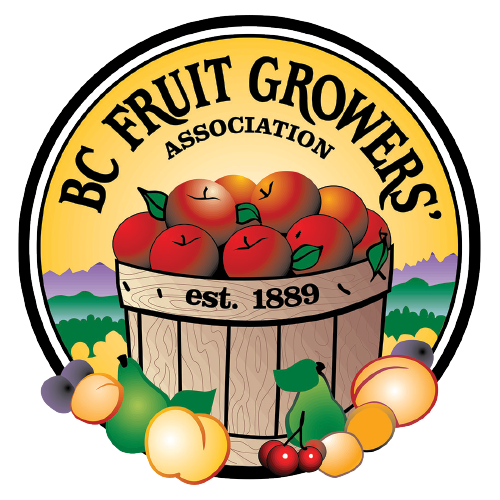Chronicle: 1986
A fruitful century
We’ve got the technology, we’ve got the location and the climate, we’ve got the people. We’ve got everything in place including a reputation as producers of quality apples and soft fruits. We simply have to put it together with affordable farm financing, some good luck in the weather and top management skills and we have good reason to be optimistic about having a healthy fruit industry in the long term.
(Gerald Geen, President B.C.F.G.A.)
- David Hobson, Vice-president of the B.C.F.G.A., served as Vice-president of the B.C. Federation of Agriculture.
- In a close vote, delegates to the B.C.F.G.A. Annual General Meeting held in January defeated a motion to open membership in the organization to all growers. Opening membership to independents would have involved separating B.C. Tree Fruits Ltd. from the B.C.F.G.A.
- The B.C.F.G.A. was disappointed by the federal government’s budget as it applied to agriculture. The B.C.F.G.A. wanted the federal Farm Credit Corporation to resume its original function of providing loans to farmers at reasonable interest rates.
- The B.C.F.G.A. continued to work with other Canadian apple producers on developing a national tri-partite (federal/provincial/producer) stabilization program.
- The provincial government responded to B.C.F.G.A. concerns about the inadequacies of farm programs in a number of ways. It introduced the Grower Loan Program, an interest-free cash advance program for fruit delivered to the packing house. Provincial funding was to work in conjunction with the federal Advance Payments for Crops Act. The provincial government also created a Agricultural Land Development Act loan fund, at half prime rate to $5,000 per acre with a maximum of $35,000, to assist tree fruit growers in carrying out necessary orchard renovations. The government also set a lower F.I.I. premium rate for the 1984 apple crop.
- The Okanagan lost its last commercial fruit cannery and its second largest employer in the fruit industry when the Jim Pattison Group in Vancouver announced closure of the D.L. Milne Cannery in Summerland. Thus disappeared one of the five major components of the industry which had consisted of growers, packing houses, B.C. Tree Fruits Ltd., Sun-Rype Products Ltd., and the commercial canners.
- A report prepared for Agriculture Canada stated that tree fruit farms in British Columbia, due to their older trees, had twenty per cent lower yields per acre than those in Washington State. Also, if the B.C. farms were increased to an average of forty acres, there would be at least a fourteen per cent decline in production costs.
- Since the loss of mandatory one-desk selling in 1984, there had been a decline in total exports and in returns to growers.
- The B.C. Tree Fruit Marketing Board, which was elected by the Annual Convention of the B.C.F.G.A., and which promoted, controlled, and regulated the Industry, wanted representation from the independents. The Marketing Board wished to implement orderly marketing and to raise the quality of the immature fruit which some of the independents were selling on foreign markets. However, the minority Okanagan Fruit Producers’ and Shippers’ Association and the unaffiliated independents wanted the same number of members on the B.C. Tree Fruit Marketing Board as the B.C.F.G.A. which represented 1,700 growers. The demand of the independents for such skewed representation was met with a blunt refusal from the B.C.F.G.A.
- The B.C. Tree Fruit Marketing Board gave the independents access to the B.C.F.G.A.’s markets in Taiwan and United Kingdom.
- In May, the board of B.C. Tree Fruits Ltd. and the Executive of the B.C.F.G.A. called upon the three member B.C. Tree Fruit Marketing Board to resign. The Marketing Board refused.
- Gerald Geen, President of the B.C.F.G.A., forecast that free trade, if implemented, would cost the Okanagan soft fruit producers about $1.5 million per year.
- The world supply of fruit, and of apples in particular, was nearing oversupply due to extensive new plantings in Washington State, Ontario, Quebec and other apple producing areas. Since 1966, Washington State production had doubled.
- President Gerald Geen pointed out that the growers who were in financial difficulties were those who had incurred capital costs for orchard renovations between 1978 and 1982. At the time, the government had told them that renovating was a wise and prudent thing to do.
- Heavy frost in the spring resulted in small crops.
- Due to cold weather in November, 1985, and frosts the next spring, pear quantity was down for the 1986 harvest although quality was good.
- Final payout for the 1985 apple crop was good for better quality fruit. The smallest F.I.I. payment in four years was made.
- The B.C.F.G.A. was pleased that after the provincial election, John Savage, immediate Past President of the B.C. Federation of Agriculture, was appointed.







